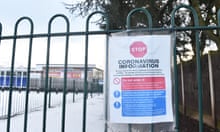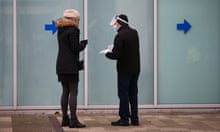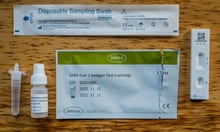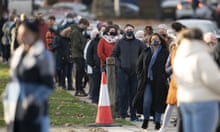Mass testing for Covid brought down the infection rate in Slovakia by about 60% in one week, say UK researchers – but in combination with tough quarantine rules and other measures that are not being implemented in Liverpool or elsewhere in the UK.
Slovakia guaranteed high take-up of the rapid tests by requiring employers not to allow people to work without a certificate to prove they had tested negative. Anybody who got a positive result had to go into quarantine with their family, but their full salary was paid for the 10 days of isolation.
A negative test result allowed people to work, but was not a criterion for visiting an elderly relative in a care home, or for a student of coming home for the holidays. The exercise in Slovakia was not carried out to lift restrictions, but to find Covid cases and isolate them.
It was successful in combination with the social restrictions imposed in the country, said the researchers from the London School of Hygiene & Tropical Medicine, whose work is published in a pre-print and has not yet been peer-reviewed.
“In Slovakia, there is relatively strong evidence that lockdown plus mass testing has led to a very large reduction in the burden of Covid-19 infections,” said associate professor Dr Stefan Flasche.
He likened what was done in Slovakia to throwing a large bucket of water on a fire: it would reduce the size of the fire without putting it out. “At the very least, you buy some time so you don’t need to have a four- or five-week lockdown,” he said.
Slovakia used the SD Biosensor rapid test, which has been approved by the World Health Organization, not the Innova test used in the UK. The test was administered by healthcare professionals, using swabs that penetrate deep into the nose and the back of the mouth. In Liverpool’s mass testing programme, people self-test with less invasive swabs, under supervision.
There was likely to be a difference in the sensitivity of the test for that reason, said Flasche. “Slovakia probably picked up 90% of the people who were tested and were infected at that time,” he said.
In Liverpool, by contrast, evidence has recently emerged that the rapid tests missed 50% of all infections and 30% of those with a high viral load, who are most likely to infect others.
Slovakia carried out 5m lateral flow tests in October. A pilot trial took place between 23 and 25 October in the four most affected counties, followed by a round of national mass testing on 31 October and 1 November. High-prevalence counties were tested again on 7 and 8 November.
The testing identified 50,000 infections in people who were then required to self-isolate with their households. “Importantly, we found that the biggest impact of mass testing is achieved by quarantining the household contacts of those who test positive,” said Flasche.
His colleague, associate professor Sebastian Funk, said the strategy as Slovakia had implemented it seemed to be successful in bringing case numbers down more quickly than restrictions alone. “This seems to have really reduced the time you need to be under lockdown. That is the appealing thing about it,” he said.
“Population-wide Covid-19 interventions such as lockdown result in a huge social and economic toll,” said Martin Pavelka, from Slovakia’s Ministry of Health and one of the authors.
“This is because they target everyone, not just those who are actually infected and spreading the disease. Low-cost rapid tests that can be produced at large scale may offer the opportunity to conduct mass testing campaigns which identify most infectious individuals.”
Dr Alexander Edwards, an associate professor in biomedical technology at Reading University, said: “It’s great to see assessment of mass-testing programmes, but it’s not straightforward to interpret this pre-print in terms of suggesting mass-testing will work everywhere, nor will it be straightforward to work out how similar programmes could be used in the UK.
“As is pointed out by the authors, there is a lot going on at the same time, so attributing a fall in cases to mass testing alone is hard. Nevertheless, it includes some indication that a mass testing programme can contribute to a reduction in cases.”








